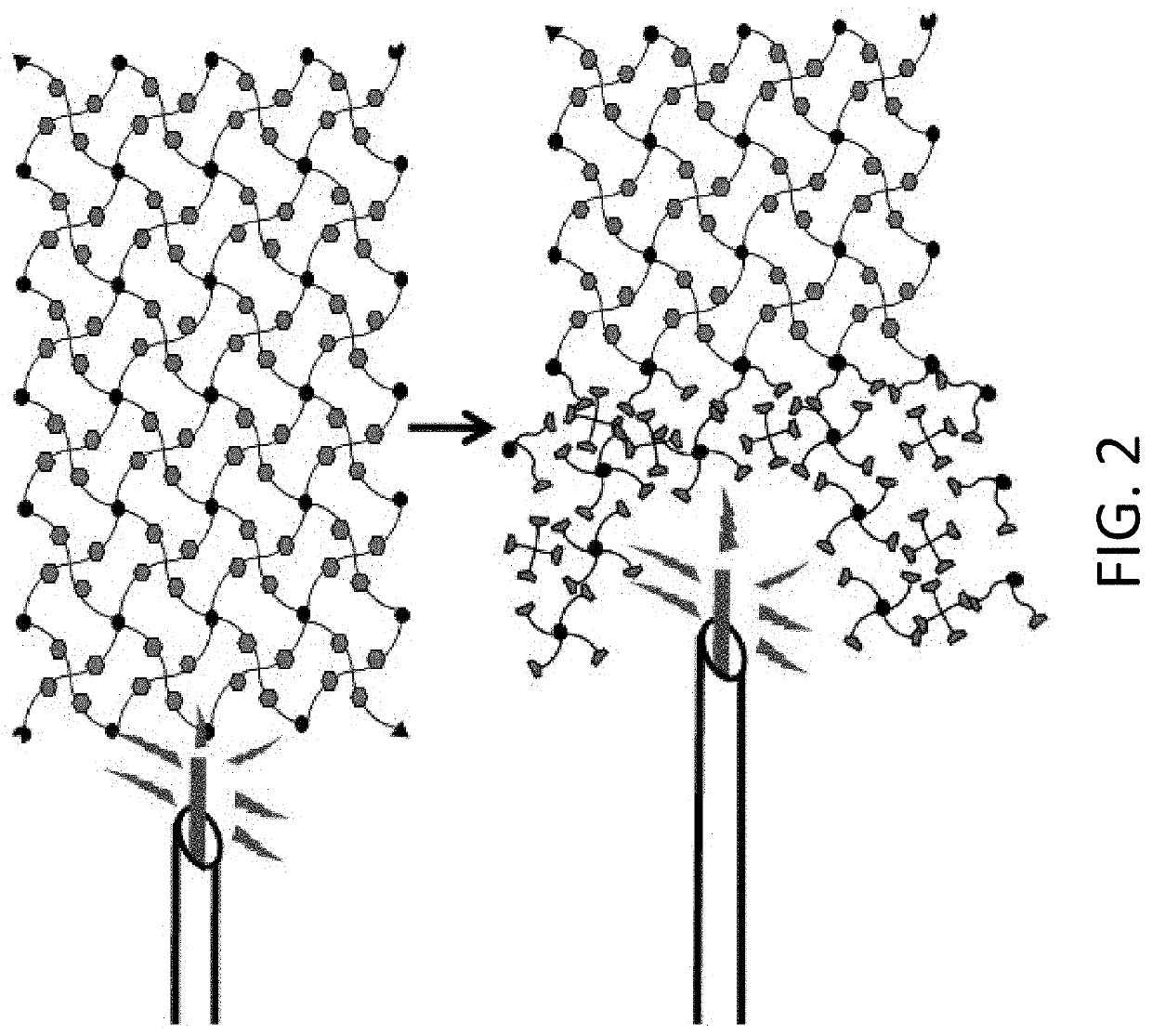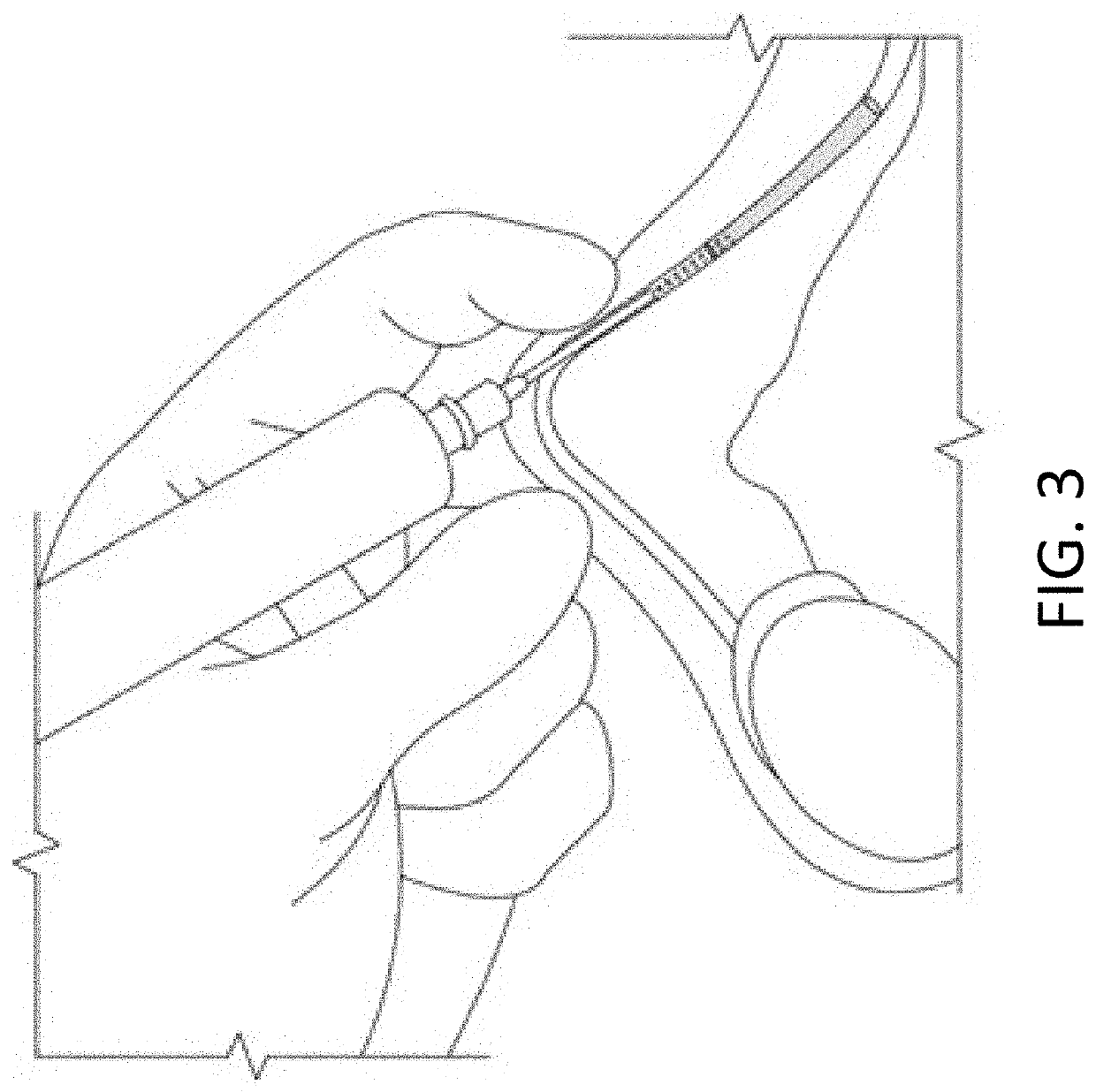Methods for implanting and reversing stimuli-responsive implants
a technology of stimuli and implants, applied in the field of occlusion methods and occlusive materials, can solve the problems of men's contraceptives not having long-lasting and reversible methods, swelling or bruising,
- Summary
- Abstract
- Description
- Claims
- Application Information
AI Technical Summary
Benefits of technology
Problems solved by technology
Method used
Image
Examples
example 1
on of an Occlusive Polymer Hydrogel
[0184]FIG. 1 is a representation of an occlusive polymer device that is implanted into a bodily lumen through a needle. The injection forms a sturdy hydrogel that secures itself in the lumen. The hydrogel also contains pores on its surface, which are able to block the flow of certain cells, such as sperm for male contraception, or oocytes for female contraception. When the hydrogel is exposed to a stimulus (in this case, the stimulus is in the form of a solution), the hydrogel dissolves into an aqueous state. Thus, the hydrogel no longer occludes the bodily duct.
example 2
of Hydrogel Upon Exposure to Light
[0185]FIG. 2 represents a tightly-networked, stimuli-responsive hydrogel being exposed and reversed using light as the stimulus. In this case, the hydrogel is formed from two “star” (4-arm) macromers. Both macromers contain photolabile moieties, which are photocleavable and provide the final hydrogel the ability to be reversed using light. The two macromers form the hydrogel by having their end-groups cross-link through a covalent reaction, such as a bioorthogonal reaction. In the figure, a needle containing a fiber optic is depicted approaching the hydrogel. The fiber optic is emitting light in the visible spectrum, particularly violet. Upon exposure to the light, the photolabile groups within the hydrogel are cleaving and thus, the hydrogel is becoming irreversibly dissolved. Upon cleavage of the tight-network, the hydrogel's mechanical properties become reduced (e.g. storage modulus, loss modulus, normal force).
example 3
of Stimulus to a Vas-Occlusive Device
[0186]FIG. 3 is a schematic diagram showing delivery of a stimulus to an occlusion in the lumen of the vas deferens through a percutaneous method. Ultrasound may also be used to assist in imaging the vas deferens and guiding the percutaneous injection. Alternatively, the vas deferens can be exteriorized through a small puncture in the scrotum, and then the stimulus can be exposed to the occlusion using a needle or over-the-needle catheter.
PUM
| Property | Measurement | Unit |
|---|---|---|
| wavelength | aaaaa | aaaaa |
| wavelength | aaaaa | aaaaa |
| wavelength | aaaaa | aaaaa |
Abstract
Description
Claims
Application Information
 Login to View More
Login to View More - R&D
- Intellectual Property
- Life Sciences
- Materials
- Tech Scout
- Unparalleled Data Quality
- Higher Quality Content
- 60% Fewer Hallucinations
Browse by: Latest US Patents, China's latest patents, Technical Efficacy Thesaurus, Application Domain, Technology Topic, Popular Technical Reports.
© 2025 PatSnap. All rights reserved.Legal|Privacy policy|Modern Slavery Act Transparency Statement|Sitemap|About US| Contact US: help@patsnap.com



